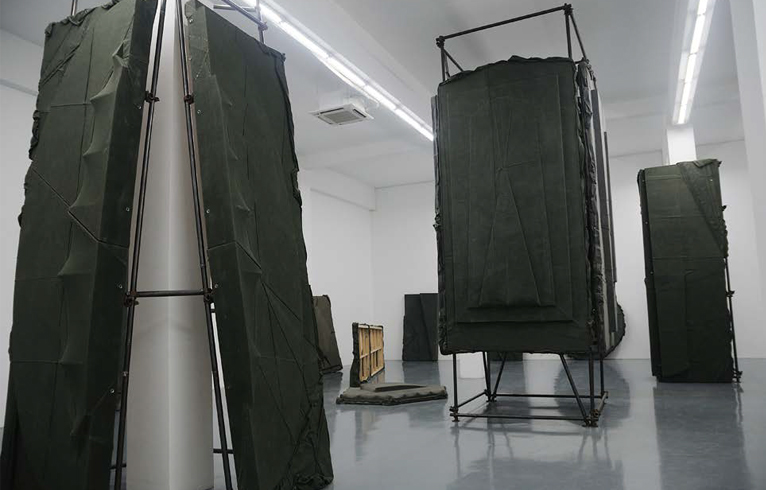LIU WEI
| November 21, 2012 | Post In LEAP 17

Since giving up the expressionist flairs of academic painting 15 years ago, Liu Wei’s art has evolved. Regardless of subject matter or theme, the mediums used in his work, or the topic he chooses— whether the alienation of individuals or the empathetic identification with others— his art expresses the suppression of individualism and the emergence of dark subjectivity. Individual experience is regarded as passive and oppressive. We cannot face art except in the sense of cognitive social concept. If an individual is too attached to social reality, experience becomes a projection of social consciousness. The universality and integrity of the world remain closed. Similarly, as Liu repeatedly mentions that the body, like self-experience, only constitutes a part of this cognitive path, and also because of this limitation, the artists have taken the initiative to abandon it. True, a hand can feel pain and cold, and eyes can see light, but to artists such as Liu, the real need is to survey the creation of the world while standing on the moon.
From this perspective, we can easily understand Liu Wei’s art is not just about visuality. More similar to early twentieth century Soviet constructivism, his work is a search for universal rational knowledge with strong spirituality. The acuity and intuition for color shown in his paintings, such as Merely a Mistake 010), is just one of many harmonious elements serving to unify space. Speaking with Hans-Ulrich Obrist, Liu said he was more concerned about control over the essence of each composition and was careful to not let one type of visual or tactile element dominate. On this basis, Liu is like a magician, assigning each element a role to construct the gesamtkunstwerk, or “total artwork.”
More significant are the barriers and restrictions a knowledgeable viewer encounters when he tries to penetrate the artist’s thoughts and mind. Visual perception is often obstructed, making it difficult to connect social reality with the materials and the semblance of the installation. No matter how feeble the attempt, the viewer’s effort to understand, imagine, and know the world the artist has created is blocked. Even by stepping onto one of the two steps the artist has prepared especially for viewing the Colosseum-like large, wooden, circular installation, there is no aesthetic pleasure. The numerous obstacles force us to change visual direction frequently, but each time, we fail. However, it is precisely because of these frustrating obstacles that the art of these objects emerges: it is the artist himself, not these exhibited objects, who is trying to obstruct us. Pu Hong (Translated by Yvette Zhu)


